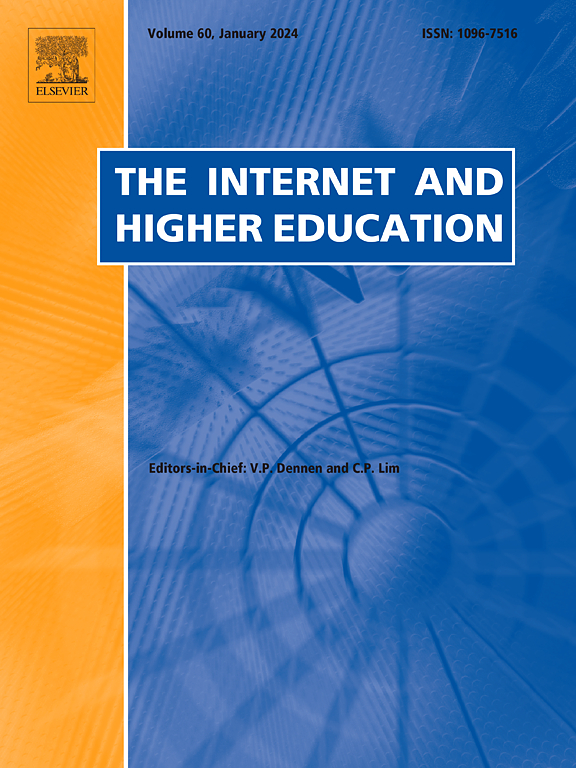Community of inquiry: A bridge linking motivation and self-regulation to satisfaction with E-learning
IF 6.8
1区 教育学
Q1 EDUCATION & EDUCATIONAL RESEARCH
引用次数: 0
Abstract
Learner satisfaction is a key metric that encapsulates the overall e-learning experience. While numerous studies have explored the “what” (i.e., the factors that predict satisfaction), there has been less focus on the “how” (i.e., the mechanisms through which these factors are associated to satisfaction). This study seeks to address this gap by elucidating how two key individual factors, motivation and self-regulation, are associated with satisfaction. It postulates that while these factors are directly associated with learner satisfaction, they also have an indirect relationship through their association with the Community of Inquiry (CoI) presences—social, cognitive, and teaching—which serve as mediating factors. Data were collected from 247 master's students enrolled in online programs at three state universities in Iran. Path analysis was performed to study the interactions between these variables. The findings provide valuable insights into their complex relationships, revealing that self-regulation had a more substantial predictive role in learner satisfaction than learner motivation. Furthermore, while both motivation and self-regulation were directly associated with satisfaction, they also had indirect associations through their relationship with the three CoI presences. Within this process, the perception of cognitive presence emerged as a central mediator, highlighting its crucial role in enhancing the e-learning experience. The paper concludes with suggestions for theoretical advancement and practical implications for future e-learning practices.
探究社区:连接动机和自我调节与电子学习满意度的桥梁
学习者满意度是概括整个电子学习体验的关键指标。虽然许多研究都探讨了“什么”(即预测满意度的因素),但对“如何”(即这些因素与满意度相关的机制)的关注较少。本研究试图通过阐明动机和自我调节这两个关键的个人因素如何与满意度相关联来解决这一差距。它假设,虽然这些因素与学习者满意度直接相关,但它们也通过与探究社区(CoI)存在的关联(社会、认知和教学)存在间接关系,这些因素作为中介因素。数据收集自伊朗三所州立大学在线课程的247名硕士生。通过通径分析来研究这些变量之间的相互作用。这些发现为他们之间复杂的关系提供了有价值的见解,揭示了自我调节在学习者满意度方面比学习者动机具有更实质性的预测作用。此外,虽然动机和自我调节都与满意度直接相关,但它们也通过它们与三种CoI存在的关系存在间接关联。在这个过程中,认知在场的感知作为一个中心中介出现,突出了它在增强电子学习体验方面的关键作用。最后,对未来网络学习的理论发展和实践意义提出了建议。
本文章由计算机程序翻译,如有差异,请以英文原文为准。
求助全文
约1分钟内获得全文
求助全文
来源期刊

Internet and Higher Education
EDUCATION & EDUCATIONAL RESEARCH-
CiteScore
19.30
自引率
4.70%
发文量
30
审稿时长
40 days
期刊介绍:
The Internet and Higher Education is a quarterly peer-reviewed journal focused on contemporary issues and future trends in online learning, teaching, and administration within post-secondary education. It welcomes contributions from diverse academic disciplines worldwide and provides a platform for theory papers, research studies, critical essays, editorials, reviews, case studies, and social commentary.
 求助内容:
求助内容: 应助结果提醒方式:
应助结果提醒方式:


